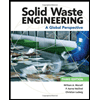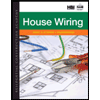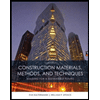Existing Filter Design Parameters at 22.5 MGD: A) # of Filters: 5 B) #Bays per Filter: 1 C) Bay Surface Dimensions (L X W X D): (40.5 ft. X 13 ft. X 11.5 ft.) D) Surface Area per Filter: 526.5 ft^2 E) Total Filtration Area: 2,633 ft^2 F) Hydraulic Loading Rate: 6 gpm/sf (w/ all filters in service) G) Filtration Capacity at HLR: 22.7 MGD H) Filter Media: 1) Anthracite: 20 in. depth, 1.00 mm Effective Size 2) Sand: 9 in. depth, 0.50 mm Effective Size 1) L/d Ratio (depth of media/effective size): 965 J) Backwash Pumps: 15 MGD (two pumps) K) Backwash water for the filters is provided from the high service pump station through a 24-inch backwash water L) Air Wash Blowers: 1) Number: 2 Hoffman Centrifugal Model 38406A, 125 hp 2) Capacity: 3,100 scfm (standard cubic ft/^2) 3) Air Scour Rate: 5.90 scfm/ft^2 Deliverables: 1) Determine if the existing filtration system is sufficient to accommodate the projected future capacity. A) Current Capacity: 22.5 MGD B) Future Capacity: 34.5 MGD for 110,000 residents C) If not, design upgrades to the filtration system. D) Make sure the filtration rate, filter media, and head loss meet the recommended design standards. 1) Determine if the existing filtration system is sufficient to accommodate the projected future capacity. A) Current Capacity: 22.5 MGD B) Future Capacity: 34.5 MGD for 110,000 residents C) If not, design upgrades to the filtration system. D) Make sure the filtration rate, filter media, and head loss meet the recommended design standards. 2) Determine the pressure requirements for backwashing at the rate recommended in the design guidelines. (Use your knowledge of headloss) 3) Evaluate the following sand product, calculate the clean bed headloss, and determine if it meets your specifications for filter media. Washed Utility Sand #910-3 4) Specify the number of filters, the design flow rate per filter, the filter dimensions (e.g., surface area, depth), and the media that will be used. 5) If new filters are proposed to be constructed, show on the site plan (which is to scale) where they would be located on the site.
Existing Filter Design Parameters at 22.5 MGD: A) # of Filters: 5 B) #Bays per Filter: 1 C) Bay Surface Dimensions (L X W X D): (40.5 ft. X 13 ft. X 11.5 ft.) D) Surface Area per Filter: 526.5 ft^2 E) Total Filtration Area: 2,633 ft^2 F) Hydraulic Loading Rate: 6 gpm/sf (w/ all filters in service) G) Filtration Capacity at HLR: 22.7 MGD H) Filter Media: 1) Anthracite: 20 in. depth, 1.00 mm Effective Size 2) Sand: 9 in. depth, 0.50 mm Effective Size 1) L/d Ratio (depth of media/effective size): 965 J) Backwash Pumps: 15 MGD (two pumps) K) Backwash water for the filters is provided from the high service pump station through a 24-inch backwash water L) Air Wash Blowers: 1) Number: 2 Hoffman Centrifugal Model 38406A, 125 hp 2) Capacity: 3,100 scfm (standard cubic ft/^2) 3) Air Scour Rate: 5.90 scfm/ft^2 Deliverables: 1) Determine if the existing filtration system is sufficient to accommodate the projected future capacity. A) Current Capacity: 22.5 MGD B) Future Capacity: 34.5 MGD for 110,000 residents C) If not, design upgrades to the filtration system. D) Make sure the filtration rate, filter media, and head loss meet the recommended design standards. 1) Determine if the existing filtration system is sufficient to accommodate the projected future capacity. A) Current Capacity: 22.5 MGD B) Future Capacity: 34.5 MGD for 110,000 residents C) If not, design upgrades to the filtration system. D) Make sure the filtration rate, filter media, and head loss meet the recommended design standards. 2) Determine the pressure requirements for backwashing at the rate recommended in the design guidelines. (Use your knowledge of headloss) 3) Evaluate the following sand product, calculate the clean bed headloss, and determine if it meets your specifications for filter media. Washed Utility Sand #910-3 4) Specify the number of filters, the design flow rate per filter, the filter dimensions (e.g., surface area, depth), and the media that will be used. 5) If new filters are proposed to be constructed, show on the site plan (which is to scale) where they would be located on the site.
Solid Waste Engineering
3rd Edition
ISBN:9781305635203
Author:Worrell, William A.
Publisher:Worrell, William A.
Chapter5: Separation Processes
Section: Chapter Questions
Problem 5.27P
Related questions
Question

Transcribed Image Text:Existing Filter Design Parameters at 22.5 MGD:
A) # of Filters: 5
B) #Bays per Filter: 1
C) Bay Surface Dimensions (L X W X D): (40.5 ft. X 13 ft. X 11.5 ft.)
D) Surface Area per Filter: 526.5 ft^2
E) Total Filtration Area: 2,633 ft^2
F) Hydraulic Loading Rate: 6 gpm/sf (w/ all filters in service)
G) Filtration Capacity at HLR: 22.7 MGD
H) Filter Media:
1) Anthracite: 20 in. depth, 1.00 mm Effective Size
2) Sand: 9 in. depth, 0.50 mm Effective Size
1) L/d Ratio (depth of media/effective size): 965
J) Backwash Pumps: 15 MGD (two pumps)
K) Backwash water for the filters is provided from the high service pump
station through a 24-inch backwash water
L) Air Wash Blowers:
1) Number: 2 Hoffman Centrifugal Model 38406A, 125 hp
2) Capacity: 3,100 scfm (standard cubic ft/^2)
3) Air Scour Rate: 5.90 scfm/ft^2
Deliverables:
1) Determine if the existing filtration system is sufficient to accommodate the
projected future capacity.
A) Current Capacity: 22.5 MGD
B) Future Capacity: 34.5 MGD for 110,000 residents
C) If not, design upgrades to the filtration system.
D) Make sure the filtration rate, filter media, and head loss meet the
recommended design standards.
1) Determine if the existing filtration system is sufficient to accommodate the
projected future capacity.
A) Current Capacity: 22.5 MGD
B) Future Capacity: 34.5 MGD for 110,000 residents
C) If not, design upgrades to the filtration system.
D) Make sure the filtration rate, filter media, and head loss meet the
recommended design standards.
2) Determine the pressure requirements for backwashing at the rate recommended in
the design guidelines. (Use your knowledge of headloss)
3) Evaluate the following sand product, calculate the clean bed headloss, and
determine if it meets your specifications for filter media. Washed Utility Sand #910-3
4) Specify the number of filters, the design flow rate per filter, the filter dimensions (e.g.,
surface area, depth), and the media that will be used.
5) If new filters are proposed to be constructed, show on the site plan (which is to scale)
where they would be located on the site.
Expert Solution
This question has been solved!
Explore an expertly crafted, step-by-step solution for a thorough understanding of key concepts.
Step by step
Solved in 2 steps with 3 images

Recommended textbooks for you

Solid Waste Engineering
Civil Engineering
ISBN:
9781305635203
Author:
Worrell, William A.
Publisher:
Cengage Learning,

Residential Construction Academy: House Wiring (M…
Civil Engineering
ISBN:
9781285852225
Author:
Gregory W Fletcher
Publisher:
Cengage Learning

Construction Materials, Methods and Techniques (M…
Civil Engineering
ISBN:
9781305086272
Author:
William P. Spence, Eva Kultermann
Publisher:
Cengage Learning

Solid Waste Engineering
Civil Engineering
ISBN:
9781305635203
Author:
Worrell, William A.
Publisher:
Cengage Learning,

Residential Construction Academy: House Wiring (M…
Civil Engineering
ISBN:
9781285852225
Author:
Gregory W Fletcher
Publisher:
Cengage Learning

Construction Materials, Methods and Techniques (M…
Civil Engineering
ISBN:
9781305086272
Author:
William P. Spence, Eva Kultermann
Publisher:
Cengage Learning

Traffic and Highway Engineering
Civil Engineering
ISBN:
9781305156241
Author:
Garber, Nicholas J.
Publisher:
Cengage Learning

Engineering Fundamentals: An Introduction to Engi…
Civil Engineering
ISBN:
9781305084766
Author:
Saeed Moaveni
Publisher:
Cengage Learning
